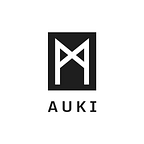What Is the Posemesh?
Improving the State of Positioning
There have been many proposed improvements to the state of positioning, but the dominant trend in our world today is that of visual recognition of spatial anchors. Whether you know this method by the name of visual positioning, spatial anchors, or digital twins, they all revolve around the same core principle:
Devices share their camera feeds in exchange for spatial computation. Show the VPS and its owner what you’re looking at, and they will return your position.
There are many drawbacks of such an approach, both practically and ethically, and we discussed that at length in our 2021 essay “The blind pursuit of Vision”. Foremost of the concern are those of an ethical nature:
Who can be entrusted with seeing through your eyes? Who should own the map of our most intimate spaces? AR developers must carefully read the Terms of Service of these centralized positioning protocols, lest they find themselves carelessly subjugating their users to undue surveillance.
We wanted to envision a future where spatial computing could be both collaborative and privacy-preserving and constructed so that it would limit the surveillance capabilities of any one organisation — including ourselves.
A decentralized protocol for positioning would be one that allowed and encouraged sovereign ownership of the maps of our private spaces, one where you could selectively share data with trusted parties.
This paradigm of positioning turns the equation of visual positioning on its head:
Rather than giving a central cloud authority the necessary data to calculate your position, devices collaboratively compute on the edge.
The posemesh is our proposed vision for a decentralized protocol for collaborative machine proprioception.
The Machine, the Network, and the Domain
A posemesh can be understood as being constructed out of three fundamental aspects, each solving a crucial piece of the spatial computing puzzle.
On the edge is the Machine, the device, and the software that is looking to compute its position. The Machines have the ability to receive and process data from the posemesh and are equipped with sensors of their own through which they can contribute data.
An example of the Machine would be a modern smartphone running an application connecting to the posemesh. It might use its camera, gyroscope, and other sensors to reason about the world in conjunction with the data it receives from collaborating posemesh devices synchronously through the Network and asynchronously through the Domain.
The Network allows messages and spatial information to be relayed between computers. Without the relay network, devices would have difficulty finding and communicating with each other. Moreover, the Network needs to pass the information to the relevant machines promptly. The higher the latency between machines, the less accurate any dynamic spatial calculation becomes.
The Domain is a repository of spatial information over time, a collaboratively sourced map of an environment. The Domain receives sensory input from multiple devices across multiple sessions and is tasked with consolidating, interpreting, and storing the information for future use.
In summary, the job of the Machine is to calculate its own position. The job of the Network is to deliver information between Machines at the lowest possible latency, and the job of the Domain is to store, interpret, and maintain information about a space over time.
In centralized systems like a VPS, there is only one Domain, and the spatial computation is done Domain-side in the cloud. In the posemesh, there are multiple Domains, and the spatial computation is done on the edge.
Originally Published on The Posemesh Foundation.
About Auki Labs
Auki Labs is at the forefront of spatial computing, pioneering the convergence of the digital and physical to give people and their devices a shared understanding of space for seamless collaboration.
With a focus on user-centric design and privacy, Auki Labs empowers industries and individuals to embrace the transformative potential of spatial computing, enhancing productivity, engagement, and human connection.
Auki Labs is building the posemesh, a decentralized spatial computing protocol for AR, the metaverse, and smart cities.
About The Posemesh Foundation
The posemesh is an open-source protocol that powers a decentralized, blockchain-based spatial computing network.
The posemesh is designed for a future where spatial computing is both collaborative and privacy-preserving. It limits the surveillance capabilities of any organization and encourages sovereign ownership of private space maps.
The decentralization also offers a competitive advantage, especially in shared AR sessions where low latency is crucial. The posemesh is the next step in the decentralization movement, responding to the growing power of big tech.
The Posemesh Foundation has tasked Auki Labs with developing the software infrastructure of the posemesh.
Twitter | Discord | Medium | Updates | YouTube | Telegram | Posemesh.org
